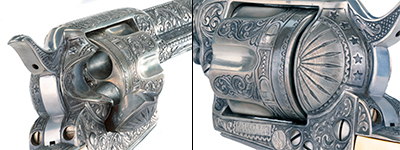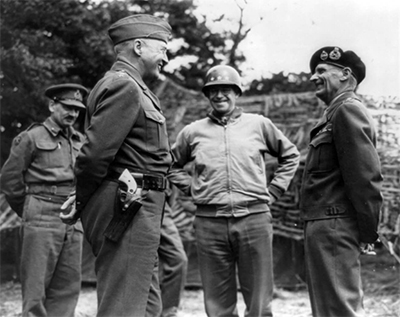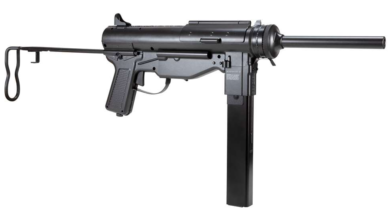
While the “Peacemaker” was originally available with a 7.5-inch barrel, some were shortened to 4.75 inches for a variety of reasons.
On the internet, there is a popular meme of Sean Bean as Ned Stark from “Game of Thrones” facing a fierce wind, clad in a wolf–skin cloak and saying, “Brace yourselves…” and then an endless number of witty closures follow, warning the reader that your news feed is about to be populated with dozens of mentions of anything from Marine Corps birthday notices to election-result conspiracies. Were I a betting man, I would place odds on the timely appearance of similar memes announcing a plethora of articles on the Colt Peacemaker, Winchester 1873 and Trapdoor Springfield, as they all celebrate their 150th birthdays this year.
As far as revolvers go, the Colt Single Action Army is perhaps one that truly has earned the far-too-often-used sobriquet “iconic.” Known as the SAA, Model P or “Peacemaker,” substantially more than 500,000 have been made by Colt, with almost an equal number of exact copies having been made by Belgian, German and Italian manufacturers. Produced in more than 30 chamberings with barrel lengths from 2 to 16 inches, the original SAA, as adopted by the U.S. Army in 1872, was chambered in .45 Colt (aka .45 Long Colt) and had a 7.5-inch barrel.

Of the myriad models of firearms that Colt has produced since 1836, the Peacemaker is the most written about. More books and articles have been published about this revolver than any other. The following 800 or so words that comprise my missive on the subject are not meant to be a concise history of the gun, but a general treatise that hopefully will contain some tidbits of information that may not be common knowledge or found in the tomes of Wilson, Servern, Kopec and Wilkerson. To paraphrase Dickens, “the wisdom of our ancestors is in their published works; and my unhallowed hands shall not disturb it, or the Country’s done for.”
To begin with, the SAA draws its name from the fact that it is a revolver which one has to cock the hammer manually to rotate the cylinder to bring a new round into position to be fired, as opposed to a double-action revolver which can bring a round into battery by manually cocking the hammer or pulling on the trigger to perform both the cocking and firing of the gun. This is an important distinction, as Samuel Colt championed the single-action design of his revolvers as being more accurate than those of his patent-skirting competitors that were marketing double-action revolvers. The immediate post-civil war era (1865) saw the maturing of the self-contained metallic cartridge, as well as the expiration of Rollin White’s patent for a bored-through cylinder.
William Mason and Charles Richards were both engineers at Colt who had successfully converted Colt cap-and-ball (percussion) revolvers into cartridge-firing models and designed the Colt Model 1872 “open-top” revolver, the immediate predecessor to the SAA.
During the Civil War years (1861-1865) Colt’s main competitor was Remington’s New Model Army revolver designed by Fordyce Beals and introduced in 1858. This wheelgun had a topstrap that connected the barrel to the frame and was marketed as a “solid-frame” revolver, giving it a supposed advantage surpassing Colt’s “open-top” design where the barrel was connected to the frame by a wedge through the cylinder (base) pin.

Richards and Mason designed a SAA prototype for the U.S. Army trials in 1872 that was Colt’s first metallic-cartridge-firing, solid-frame revolver. (The Colt Model Root revolvers of 1855 were also solid-frame, but percussion-only, at that time.) The result was awarded a U.S. Army contract on July 23, 1873 and remained the standard U.S. service sidearm until it was replaced by the Colt double-action .38-caliber revolver in 1892. Still, thousands of refurbished and shortened-barrel SAAs were used by U.S. Army regulars and volunteers well past the introduction date of its successor.
Theodore Roosevelt’s legendary “Rough Riders” went to Cuba in 1898 armed with 5.5-inch “artillery” models. GEN George S. Patton Jr. carried a privately purchased Peacemaker with ivory grips and full-coverage engraving during the Mexican Punitive Expedition of 1915 and wore it throughout his campaigns in North Africa, Italy and Europe during World War II.
The only break in production of the SAA came in 1941 as Colt concentrated its efforts on manufacturing M1911A1s and double-action revolvers for the war effort. The popularity of television in post-war homes gave rise to cowboy-themed shows that featured good guys and bad guys alike sporting the SAA in their Arvo Ojala holsters. Such was the demand for the SAA that Colt re-introduced them into the market in 1956. They are still available today through Colt dealers. Those made between 1956 and 1978 are known to collectors as second-generation Colts and bear an “SA” suffix to their serial number. Those made after 1978 bear an “SA” prefix to the serial number and are known as third-generation SAAs. (Current production guns have an “S” prefix and an “A” suffix.)
For the collector, there is a near-infinite world of interest in the SAA. From barrel lengths to chamberings to engraved models, there are likely more varieties of SAAs than any other handgun ever produced. From the special target models with Bisley grips to the flattop .22s and the adjustable-sighted New Frontiers, the SAA has something to offer that every collector will find interesting.
Happy Birthday Colt Single Action Army/Peacemaker! You are just as beautiful today as you were at your introduction 150 years ago, adding another example of the idea that perfection never ages.





![Photo of [SHOT 2023] Kel-Tec KSG410 – Miniature Fun for the Whole Family](https://hotnews92.com/wp-content/uploads/2023/08/IMG_5105-660x371-1-390x220.png)